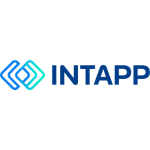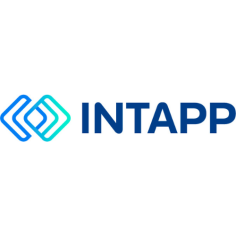Intapp: Three steps to deploying a connected firm strategy
As clients continually increase their requirements for billing, pricing, staffing, and other business practices, firms face the imperative of better connecting their people, processes, and data to meet client expectations. Despite many advances in technology and data science, many firm leaders remain hesitant to drive change within their firms, fearing it will prove too overwhelming for their professionals.
During the LegalWeek session “The Journey to Becoming a Connected Firm,” Josh Clark, Vice President of Sales Engineering at Intapp, spoke with a panel of law firm executives about how adopting new processes and connected firm technology can help legal professionals improve client service delivery. The panellists shared their own experiences migrating to a connected firm strategy, and discussed various ways to establish a scalable data foundation, improve market plans, and other key steps along the path.
Start with Small, Individual Goals
When it comes to fostering change within a firm, many firm leaders don’t even know where to begin. Tom Baldwin, Partner at Fireman & Company, shared that simply starting a conversation with executives and team leaders can reveal the firm’s most pressing business issues.
“We found that, to be really successful, [we need to be] meeting with firm leadership and understanding their business objectives,” he said. “One of the first things that we try and do is establish some objectives that the firm may want to achieve through their data journey, and start small.”
Rather than trying to address all objectives at once, firms should begin with one or two focused goals. Starting with a smaller scope of work alleviates some of the apprehension around change.
Embrace the Client Perspective
In addition to establishing internal goals, firms should also consider their clients’ objectives. Todd Arritola, Chief Business Development Officer at Winstead, explained how his firm addresses client expectations by trying to adopt a similar mindset.
“Our clients think about the industry that they’re in, and that’s the expertise and advice that they seek,” Arritola said. “They aren’t necessarily tied to a specific practice within our firm.”
Although practice groups remain an important part of firms, looking at matters through the eyes of their clients — that is, through an industry and market perspective — can help firms improve client service delivery.
“We’re moving to a much more industry-driven perspective to deliver value to our customers and clients,” Arritola said. “[We can] bring in much more cross-practice opportunities to our clients when we look through the industry lens versus a specific practice group lens.”
Dan Surowiec, Global Chief Information Officer at Baker McKenzie, also encouraged firms to listen to direct client feedback to reveal problems within the firm that leaders might not have previously recognised.
“Several years ago, client feedback indicated that our quality could be a little patchy, so we spent quite a bit of time focusing on what we could do to improve the quality of our legal services,” Surowiec shared. “It soon became pretty easy for us to see that, across all of our offices, we were [using] different processes and different technology. There was so much time wasted with [our professionals] reaching out to different teams around the world, just to make sure that they were always equipping themselves with the latest information,” Surowiec added.
By listening to client feedback, Baker McKenzie staff discovered the cause of their inconsistent service and could address the problem in a way that best suited their clients.
Provide Better Service by Building a Connected Firm
Perhaps the best way for firms to improve client experience is by investing in cloud-based connected firm management tools. Connected firm management platforms collect and store information in a single, unified system, allowing easy and quick access to data and insights. This type of software also helps teams collaborate and communicate with one another or with other clients and partners.
To improve efficiency and consistency, Baker McKenzie created its own connected firm system, Baker Client Intelligence (Baker CI). “Baker CI allows client managers to be equipped with the information they need to provide context, data, status, or whatever is needed by the client or partner at a moment’s notice,” explained Surowiec. “By having all this information in one place, [we have] more clarity around the knowledge and expertise of our people. It helps us plan, staff, and execute on these new mandates as they come in.”
Because building a connected firm is a daunting and time-consuming task, many professional service firms are turning to purpose-built solutions like Intapp OnePlace. Intapp OnePlace — AI- and cloud-based software designed with the needs of professional services firms in mind — provides a complete client and engagement lifecycle management solution. The software connects internal proprietary data with third-party data and other systems of record, and provides AI-based insights to help inform decision-making tasks. Best of all, firms can easily configure Intapp OnePlace to match their unique needs and provide an intuitive experience for professionals of all technical levels.
Once a firm has identified its own problems and goals as well as those of its clients, it can take advantage of connected firm management tools to address those objectives. The firm can begin implementing new processes, manage data more efficiently, and start making the changes needed to stay competitive in the rapidly changing industry.



